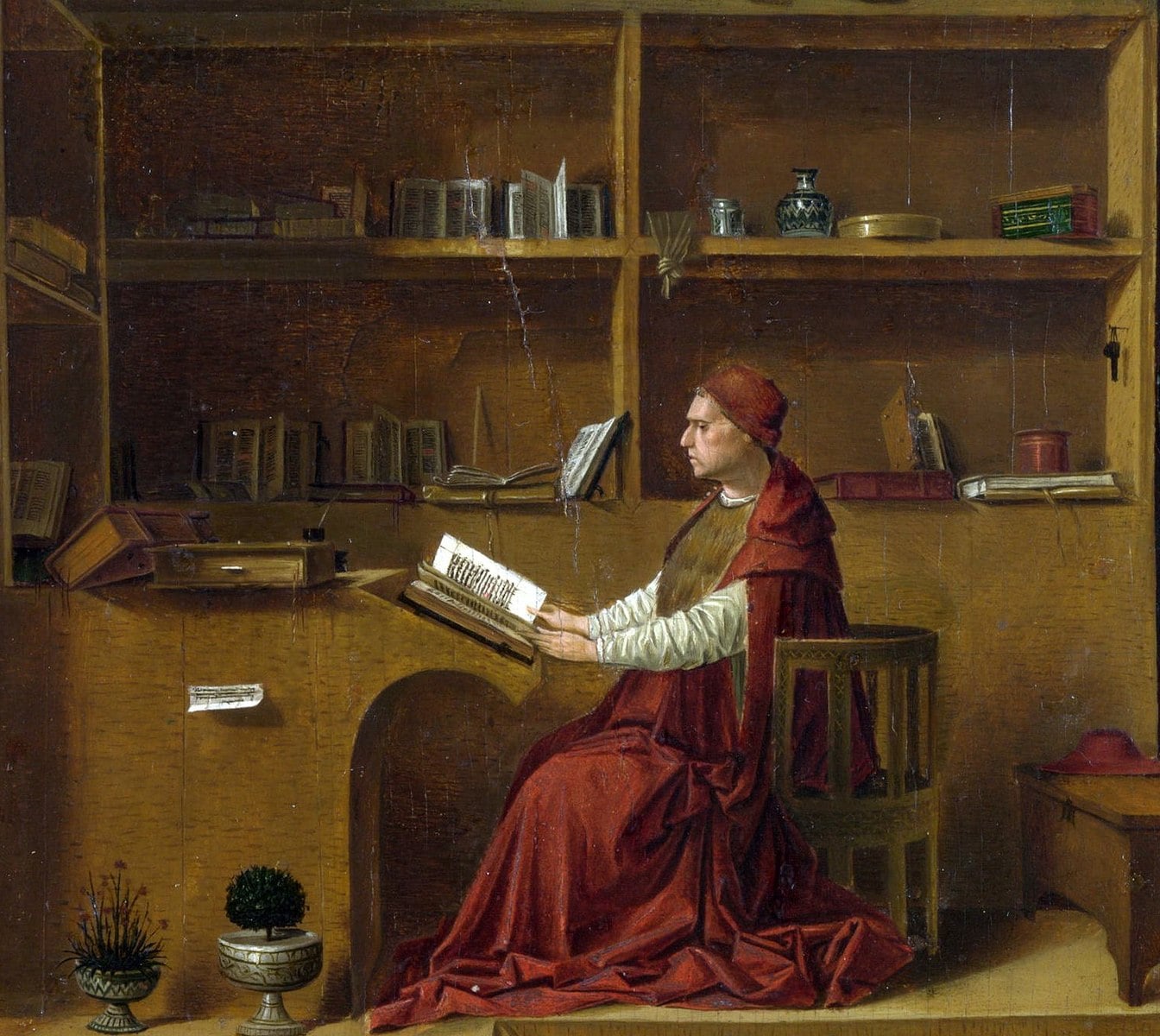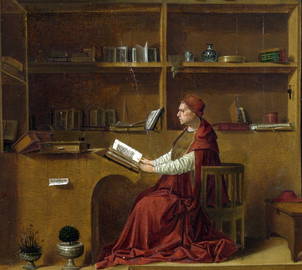
Antonello da Messina is an important figure in the history of art. His paintings represent the best of both Italian and Netherlandish art, and would go on to influence many of the Renaissance’s most famous figures. His unique approach and advanced understanding of forms won him deserved fame during his own lifetime, as well as an impressive legacy that continues to the present day.
10. Antonello da Messina Came From Obscure Origins

Undeniably, the most famous art of the Italian Renaissance emerged out of Florence and Venice. Leonardo da Vinci, Michelangelo, Titian, Botticelli and Masaccio, to name just a few, won a great name for these cities, and put northern Italy on the map as the epicentre of European culture. Antonello di Giovanni di Antonio, however, hailed from the town of Messina in Sicily. Born in 1429, he would later become known by the name of his birthplace: Antonello da Messina.
Apart from being the setting of Shakespeare’s Much Ado About Nothing, Messina is not famed for its cultural heritage. And yet its access to the Mediterranean meant that it was home to a thriving seaport, frequented by ships from across Europe and the Near East. Growing up in this melting-pot of different cultures, exposed to new and exotic goods, the young Antonello da Messina acquired a sense of creativity and taste for novelty that would prove invaluable in his artistic career.
9. He Had A Diverse Artistic Education

Ships travelled constantly between the port at Messina and the harbor at Naples, and Antonello da Messina travelled aboard one of these vessels as a boy, heading to the Italian mainland to learn the art of painting. A sixteenth century source records that he trained under Niccolo Colantonio in Naples, which was then the cosmopolitan center of south Italy. This is widely accepted by modern art critics and historians due to the clear influence of Netherlandish art on Antonello da Messina. There is evidence of oil paintings by Flemish artists such as Jan van Eyck and Rogier van der Weyden circulating in Naples from early in the 15th century, and it is evident that much of da Messina’s style is derived from their pieces.
8. Antonello da Messina Adopted A Northern Style

Antonello da Messina’s style is indebted to the Flemish and Provençal paintings that he learned in his youth. Like the work of van Eyck and van Weyden, his art exhibits meticulous attention to detail, particularly in the case of light and shadow. His figures do not wear passionate or dramatic expressions, but instead exude a sense of tranquility which also featured heavily in northern European portraiture at the time.
Nowhere is this demonstrated more clearly than in The Virgin Annunciate, now in the Palazzo Abatellis in Palermo, Sicily. The painting takes a new approach to the Madonna genre, putting the viewer in the position of the Angel Gabriel, interrupting Mary to inform her of her pregnancy. The face is realistic, her expression one of calm anticipation, and her hands are held in a naturalistic gesture that gives the image additional depth. The gentle shading on her neck, cheek and veil precisely reflects each ray of light, demonstrating the artist’s exceptional awareness of the power of color and shadow.
7. Netherlandish Influence Can Be Seen In His Greatest Masterpieces

After returning to Messina in the 1450s, the young artist began work on an almighty painting that he would eventually replicate a further two times, each version taking on new qualities. His teacher, Colantonio, worked under the patronage of Alfonso V of Aragon, who is known to have owned several paintings by van der Weyden and van Eyck on the theme of Christ’s crucifixion. Maybe Antonello da Messina saw these in person, or perhaps only knew of them through his master, but his three paintings of Jesus on the cross show a direct Flemish influence in both substance and style.

For a long time the first painting, made in 1455 and known as the Sibiu Crucifixion, was attributed to an early German painter, and has only recently been identified as the work of Antonello da Messina. One clue was that the city in the background, although clearly meant to represent Jerusalem, is actually Messina. The figures in the second painting, made around the same time and later labelled the Antwerp Crucifixion, shows far more fluid figures. The third, made twenty years later and known as the London Crucifixion, has more in common with the first, but focuses solely on the figure of Christ.

6. He Combined Italian And Flemish Techniques

Although he owed a great deal to Flemish painting, Antonello da Messina was not impervious to the art that surrounded him in Italy. He combined the attention to detail and cool colors found in northern European art with the Italian concern for simplicity and perspective that was beginning to define Renaissance painting. This resulted in carefully crafted paintings in which nature and reality were accurately represented with grandeur and luminosity.
Da Messina’s The Virgin and Child, for instance, shows the hallmarks of both Flemish and Italian painting. The face of the Madonna is sublimely serene and her veil delicately opalescent, in the style adopted from the northern painters, while her clothing and jewels, as well as those of the baby Jesus, are reminiscent of the richness found in Italian art at the time.
5. Antonello da Messina Is Credited With The Introduction Of Oil Painting To Italy

The following century, Giorgio Vasari published his seminal work, The Lives of the Artists, in which he writes biographies for many of Europe’s most renowned painters, Antonello da Messina among them. Vasari records that Antonello had been inspired by the paintings of van Eyck, which he had seen while training in Naples, and had been acquainted with Petrus Christus, a follower of van Eyck, from whom he took up oil painting. Previously, most Italian painters had painted directly onto wooden boards using tempera, made of ground pigments mixed with a soluble liquid – most commonly egg yolk! For a Flemish painter, Christus shows an unusual understanding of linear perspective in his own work, suggesting the two artists may have learned something very valuable from their interaction together.
4. He Also Revolutionized Italian Portraiture

As well as larger scenic works, Antonello produced many portraits, most of which date from the mid-late period of his career. These again show the marks of Flemish influence, typically showing the sitting in three-quarter view rather than the profile pose favored by Italian painters. His models are framed against a plain, dark background and generally look directly out of the image. Ornament and embellishment are kept to a minimum, allowing the subject and their expression to occupy the viewer’s full focus.
At this time, Italian portraits were generally intended as symbols of social status, or otherwise dedicated exclusively to religious themes. Antonello was among the first to paint people as they were, relying on their vivid expressions and lifelike semblances, rather than elaborate adornment, to convey the value of the portrait.
3. Antonello da Messina’s Career Led Him Across Italy

Antonello da Messina’s presence was recorded in several of Italy’s most artistically important locations during the 1460s and 1470s. Although he was based in Messina for most of his life, there is evidence that he traveled to Venice and Milan, learning from the other prominent painters there. Most significant among these was Giovanni Bellini. Da Messina and Bellini seem both to have benefitted from each other’s company: Antonello da Messina gained a better understanding of the human form from Bellini, who had been influenced by the sculptures of his father, Gian, while it is likely that Bellini adopted the technique of oil painting after his meeting with Antonello.
The most impressive piece painted by Antonello during his time on the Italian mainland was the San Cassiano Altarpiece, of which only a fragment survives. So striking was this masterpiece that the artist was offered the position of court portrait painter for the Duke of Milan. Despite the opportunity to relocate to a far larger and more prosperous city, Antonello chose to remain in the city of his birth with his family.
2. He Created His Own Workshop

Like many successful artists, Antonello da Messina established a workshop. He recruited junior painters to help him in his larger projects, as well as training young aspiring artists. There is evidence that da Messina’s workshop was expressly set up to produce banners and devotional images, which he sold to a Christian community in Calabria. Another document from 1461 shows that his brother, Giordano, joined the workshop on a three-year contract. His son, Jacobello, who was responsible for the completion of much of his father’s unfinished work, was also likely a member of the workshop. Despite its success, however, the workshop of Antonello da Messina does not seem to have continued to operate for long after his death in 1479.

1. da Messina’s Legacy
Even though he did not leave behind many notable students or followers to continue his work, Antonello da Messina had a huge impact on Italian art, and would influence future artists for decades to come. Merging the Flemish with the Italian, he opened up new pathways in Renaissance painting and won for himself a key position in the history of art. His importance is reflected in the value of his work: paintings by Antonello da Messina are extraordinarily rare at auction, since most are closely guarded by institutions, but when one did appear at Christie’s in 2003, it sold for £251,650.










